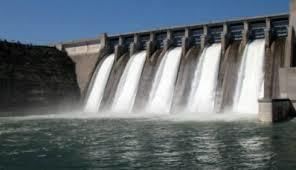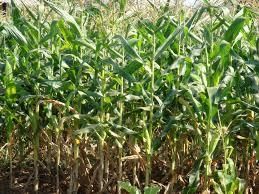GPSC (Goa) Exam > GPSC (Goa) Notes > Goa State PSC (GPSC) Preparation > Goa: Irrigation and Hydropower
Goa: Irrigation and Hydropower | Goa State PSC (GPSC) Preparation - GPSC (Goa) PDF Download
| Table of contents |

|
| Irrigation and Hydropower of Goa |

|
| Precipitation Analysis |

|
| Key Crops and Produce in Goa |

|
| Tillari Irrigation Project |

|
| Canal System Details |

|
Irrigation and Hydropower of Goa

- Goa, the smallest state in India situated within the Konkan region, is renowned for its tourism industry.
- Blessed with scenic beauty and bordered by the Arabian Sea, Goa comprises two districts - North Goa and South Goa.
- Its geographical location between Maharashtra and Karnataka exhibits a mix of mountainous terrain and coastal plains.
Geographic Features of Goa
- Positioned between 15°48'00" to 14°53'54" north latitudes and 74°20'13" to 73°40'33" east longitudes.
- Noteworthy for its diverse landscape of mountains, highlands, and coastal areas.
- Panaji, the capital city, signifies 'land that never floods'.
Water Resources in Goa
- The state is adorned with nine major rivers, with the Mandovi and Zuari Rivers playing significant roles in irrigation and hydropower. The precipitation patterns in these basins greatly influence the water resources of Goa.
Precipitation Analysis
- An analysis of monthly precipitation data from 1901-2012 and daily data from 2001-2012 for stations in the north and south districts was conducted. This study aimed to understand the average monthly, seasonal, and annual precipitation intensity, trends, and spatial distribution.
Importance of the Analysis
- Crucial for water management projects, including irrigation, hydropower generation, and flood control.
- Helps in understanding severe rainstorms, rainfall depths for different durations, and their implications.
Significance for Goa's Water Planning
- The analysis aids in developing strategies for sustainable water use and management in the state.
- Provides insights for effective planning and utilization of water resources for agricultural and energy purposes.
Key Crops and Produce in Goa

- Goa, as a small state, relies on its neighboring regions for essential produce like milk, poultry, and vegetables. The primary crops grown in Goa include rice during the monsoon season from June to September, followed by cereals such as pulses and small millets.
- Plantation crops like betel nut, coconut, and cashew are also significant, along with garden crops like pineapple, mango, bananas, and jackfruits. Additionally, various barks and bamboo canes are harvested from the forests.
Natural Water Resources
- Goa boasts over forty estuarial, eight marine, and nearly ninety riverine islands.
- The state is traversed by nine major rivers, flowing from the Eastern Western Ghats to the Western Arabian Sea, excluding the Sal River.
- The nine primary rivers in Goa are Terekhol, Baga, Zuari, Sal, Chapora Saleri, Talpona, Mandovi, and Galgibag.
- Mandovi and Zuari rivers account for approximately 70% of Goa's total geographical area, draining 2553 sq. km.
- Of these rivers, six originate and flow entirely within the state boundaries without interstate implications.
- Rivers like Terekhol and Chapora have origins in neighboring states, while Mandovi originates in Karnataka.
- These rivers play a crucial role in Goan life, serving purposes like transportation, irrigation, and coastal resources.
- Many rivers are navigable and economically vital for transporting ores to Mormugao port for export.
Water Bodies and Precipitation
- There are two significant lakes in Goa, namely Mayem and Carambolim.
- For any hydraulic project related to irrigation, hydro-power generation, or drainage, understanding precipitation patterns during storms is essential.
- A storm is characterized by heavy rainfall exceeding a specific threshold, often associated with meteorological phenomena like low-pressure systems or cyclonic storms.
- Accurate data on precipitation distribution is crucial for assessing the impact of storms on a designated area.
Tillari Irrigation Project
- The Tillari irrigation project is a collaborative effort between the governments of Goa and Maharashtra. It involves the construction of a dam across the Tillari River, which originates from the Sahyadri Mountains in Maharashtra and flows into Goa.
Project Overview
- The project aims to develop a dam across the Tillari River, known as Chapora in Goa, to facilitate irrigation and hydropower generation.
Infrastructure Details
- An irrigation cum power outlet tunnel is planned on the left side of the saddle waste weir to release water into a nearby canal connected to a power house with a 10 MW capacity.
- The canal system includes several components such as the Left Bank main canal, Neighbourhood main canal, Link canal, Banda branch canal, and Sanquelim branch canal, serving different areas in Maharashtra and Goa.
Canal System Details
- Left Bank Main Canal: This canal spans across Maharashtra and Goa, carrying a significant discharge and serving a large area for irrigation purposes.
- Neighbourhood Main Canal: Originating from Terwanmedhe weir, this canal runs through Maharashtra and Goa, significantly increasing its discharge capacity through a link canal.
- Link Canal: Connecting various canals, this canal plays a crucial role in augmenting the discharge of the main canals for irrigation needs.
- Banda Branch Canal: Designed to cater to the water needs of Maharashtra, this canal extends for a considerable length within the state.
- Sanquelim Branch Canal: Serving specific areas in Goa, this canal has a defined capacity to meet irrigation requirements.
Benefits and Value Estimates of the Project
- The project outlined in the document highlights the advantages it offers and provides estimations of its value. It is projected to significantly enhance irrigation capabilities across a substantial portion of land in northern Goa.
- Furthermore, it is poised to cater to the escalating demands for both drinking water and industrial usage within the state for an extended period. Given the prevailing water resource scenario in Goa, this initiative is expected to play a pivotal role in the overall development of the state.
Impact on Irrigation
- The project's primary benefit lies in its capacity to enhance irrigation across a large expanse of land in northern Goa.
Fulfilling Water Needs
- It is anticipated that the project will meet the increasing requirements for drinking water and industrial purposes within the state.
Significance for State Development
- Considering the current water resources situation in Goa, the project is poised to significantly contribute to the state's overall progress.
Question for Goa: Irrigation and HydropowerTry yourself: Which river plays a significant role in irrigation and hydropower in Goa?View Solution
The document Goa: Irrigation and Hydropower | Goa State PSC (GPSC) Preparation - GPSC (Goa) is a part of the GPSC (Goa) Course Goa State PSC (GPSC) Preparation.
All you need of GPSC (Goa) at this link: GPSC (Goa)
FAQs on Goa: Irrigation and Hydropower - Goa State PSC (GPSC) Preparation - GPSC (Goa)
| 1. What is the significance of irrigation and hydropower in Goa? |  |
Ans. Irrigation and hydropower play a crucial role in Goa's agriculture sector, ensuring a steady water supply for key crops and providing electricity through hydropower plants.
| 2. How does precipitation analysis impact irrigation in Goa? |  |
Ans. Precipitation analysis helps in understanding the rainfall patterns in Goa, which is essential for planning irrigation schedules and managing water resources effectively.
| 3. What are the key crops and produce grown in Goa? |  |
Ans. Some of the key crops and produce in Goa include rice, cashew nuts, coconuts, areca nuts, and fruits like mangoes and pineapples.
| 4. What is the Tillari Irrigation Project and its importance in Goa? |  |
Ans. The Tillari Irrigation Project is a major irrigation scheme in Goa that aims to provide water for agriculture, helping in increasing crop yield and improving the livelihoods of farmers.
| 5. Can you provide details about the canal system in Goa? |  |
Ans. The canal system in Goa consists of a network of canals that distribute water from rivers and reservoirs to agricultural fields, ensuring proper irrigation and water management in the region.
Related Searches














